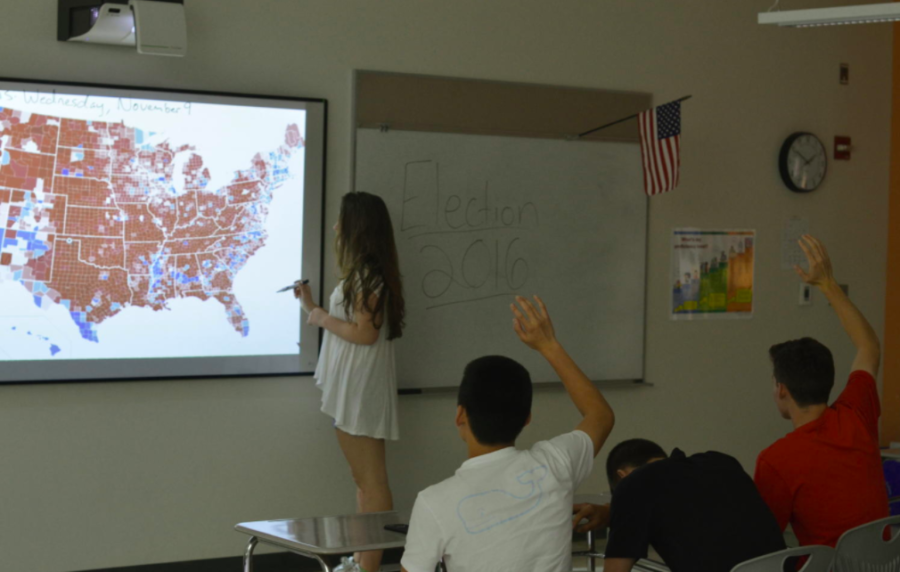Opinion: There is liberal bias at Wayland High School
November 7, 2017
Imagine your history class is having a political discussion. Your friends around you are jumping into the conversation, all wanting to share their thoughts on the topic. Now imagine that your opinion differs from everyone else’s. You want to voice your opinion but are afraid that your peers will unfairly judge you or shut you down. You may even fear that your teachers will give you a worse grade just because your views don’t match theirs. This situation is a reality for many students who identify as Republican or who have right-leaning political views at our school. In a country with an almost equal divide between Republicans and Democrats, why do students at Wayland High School that have minority political views find it so difficult to express themselves?
We believe that there is liberal bias at Wayland High School. Although a recent poll shows Republican or right-leaning students make up roughly 30% of the student body, these students are still treated as though their views are wrong when such views are matter of opinion, and they often feel alienated by their peers. This leaves many students afraid to voice their opinion at all. The most difficult thing for a Republican student is to participate in political discussions in the classroom. Teachers have the right to have their own opinion, just as everyone has the right to his or her own opinion; but when a teacher only teaches from a liberal standpoint and implies that this is the “correct” standpoint to have, it negatively affects every student in the classroom. Republican students refrain from voicing their opinions, and liberal students are sheltered from having open political discussions.
Teachers should explain both political parties’ (Democrat and Republican) viewpoints and explain to students why people differ in opinion on controversial subjects. For example, when a class is discussing Donald Trump’s border security views, the discussion should not only include how people are getting deported, but also include what it means to be an illegal immigrant, as opposed to someone who entered the country legally. This allows for students to think for themselves and create their own opinion instead of just copying their teacher’s ideologies because it’s the only thing that they’re taught. Teacher’s political viewpoints have no place in the classroom because when a student knows the teacher’s ideology, he or she is more likely to conform because they think they will receive a higher grade.
Wayland is a town with a Democratic majority. In the presidential election of 2016, the town voted in a 4-1 ratio in favor of Hillary Clinton. However, does this mean that we should only focus on teaching from a liberal standpoint and neglect conservative views when it comes to our education?
Last year’s presidential election was extremely difficult for Republican students. Simply showing any support for then-candidate Donald Trump would get you labeled as a racist. People would judge you and would not be willing to have a discussion with you. Most in-class political debates among students were one-sided, and frequent jokes or insults thrown at Trump are acceptable. If you tried to do the same thing to Democratic nominee Hillary Clinton, you would get negatively judged by teachers and students.
In a recent poll of WHS students, 54% of non-Democrats polled felt that their views were not well represented at Wayland High School. Over 54% of students with a minority political view felt that their views are not well represented in the school, and about 1 out of 3 of these students felt scared to share their views in the classroom because they feel that students and teachers would judge them.
It is up to teachers and the school administration to make sure that everyone at Wayland High School feels safe to express themselves without feeling they will be viewed negatively by their teachers and peers. Everyone is entitled to his/her own opinion, and everyone should respect and listen to each other’s views.
Opinion articles written by staff members represent their personal views. The opinions expressed do not necessarily represent WSPN as a publication.





![Last Wednesday, the Wayland School Committee gathered to discuss a number of topics regarding the health curriculum and Innovation Career Pathway course. Another large topic of conversation was the ways to potentially mitigate distracting cell phone usage. "These [phones] are going to distract your learning and social relationships," Superintendent David Fleishman said. "That's concrete right there."](https://waylandstudentpress.com/wp-content/uploads/2025/06/Screenshot-2025-06-04-at-9.49.31 PM-1200x886.png)



























![Troy Hoyt finishes the Boston Marathon, running for the Hoyt Foundation. T. Hoyt is the son of Hoyt Foundation CEO Russ Hoyt.
“[Running a marathon] might seem like a big thing, when it’s presented to you at first, but if you break it up and just keep telling yourself, “Yes, you can,” you can start chipping away at it. And before you know it, you’ll be running the whole 26 miles, and you won’t even think twice about it.” T. Hoyt said.](https://waylandstudentpress.com/wp-content/uploads/2025/04/C36E8761-1CBB-452E-9DF2-543EF7B1095E_1_105_c.jpeg)















































Aidan Bonner • Nov 16, 2017 at 12:47 PM
I am really glad you guys are talking about the entire school and its ideas, instead of just the majority. Great journalists. I also enjoyed seeing how well you two boys worked together. This shows great camaraderie and a wholesome dynamic.
Ms. Snow • Nov 8, 2017 at 8:30 AM
This is an important article. I agree with you that teachers should strive to show both sides of a debate regardless of their own opinions. And this debate should be based on policy rather than on the content of a politician’s character.
My hope is that when you write, “In-class political debates among students were one-sided, and frequent jokes or insults thrown at Trump are acceptable. If you tried to do the same thing to Democratic nominee Hillary Clinton, you would get negatively judged by teachers and students,” you are referring to earnest discussions around policy and legislation.
Sadly, in the current political climate, gossip and ‘ad hominem’ debate predominate. HD Thoreau is turning in his grave!